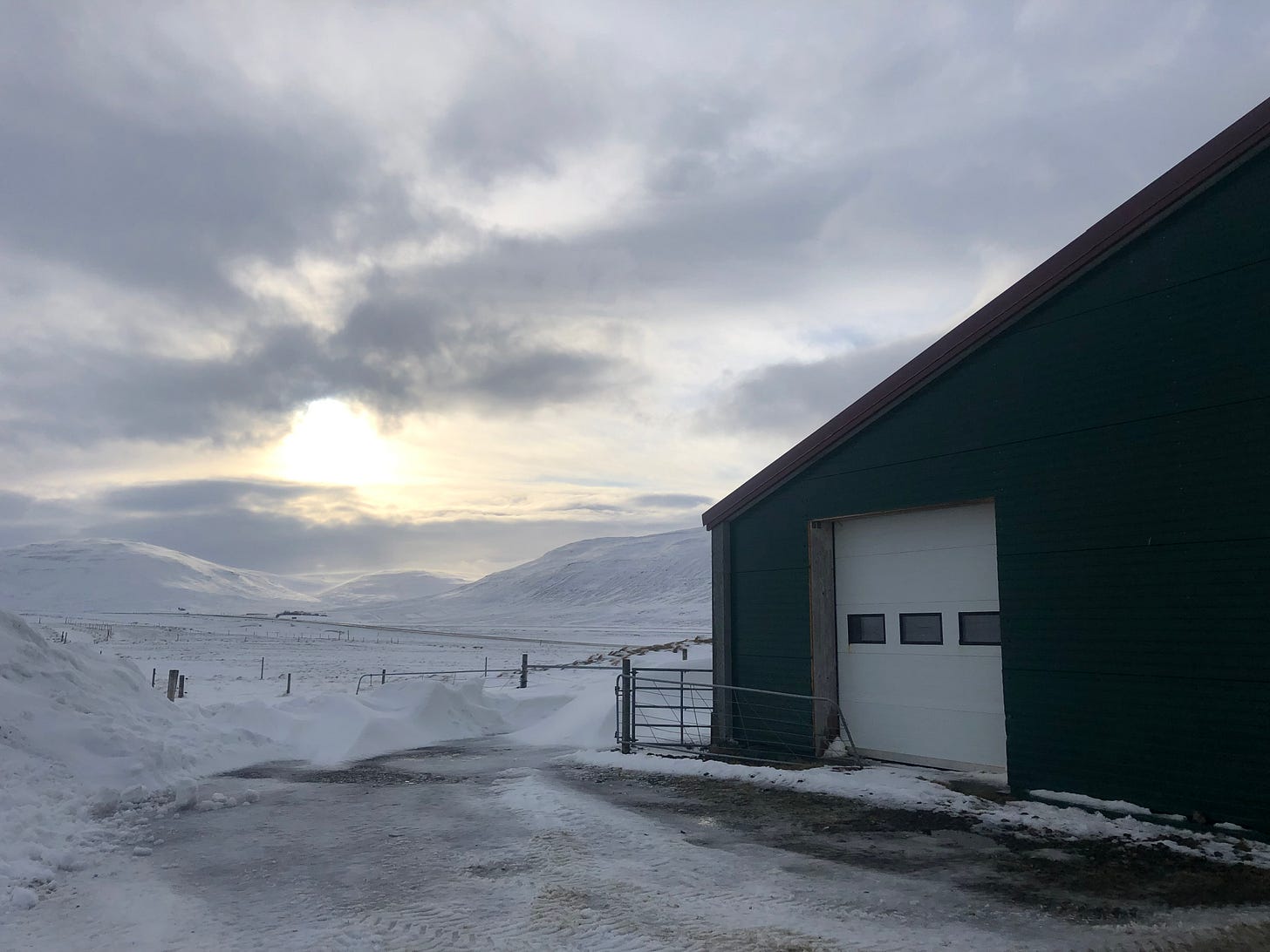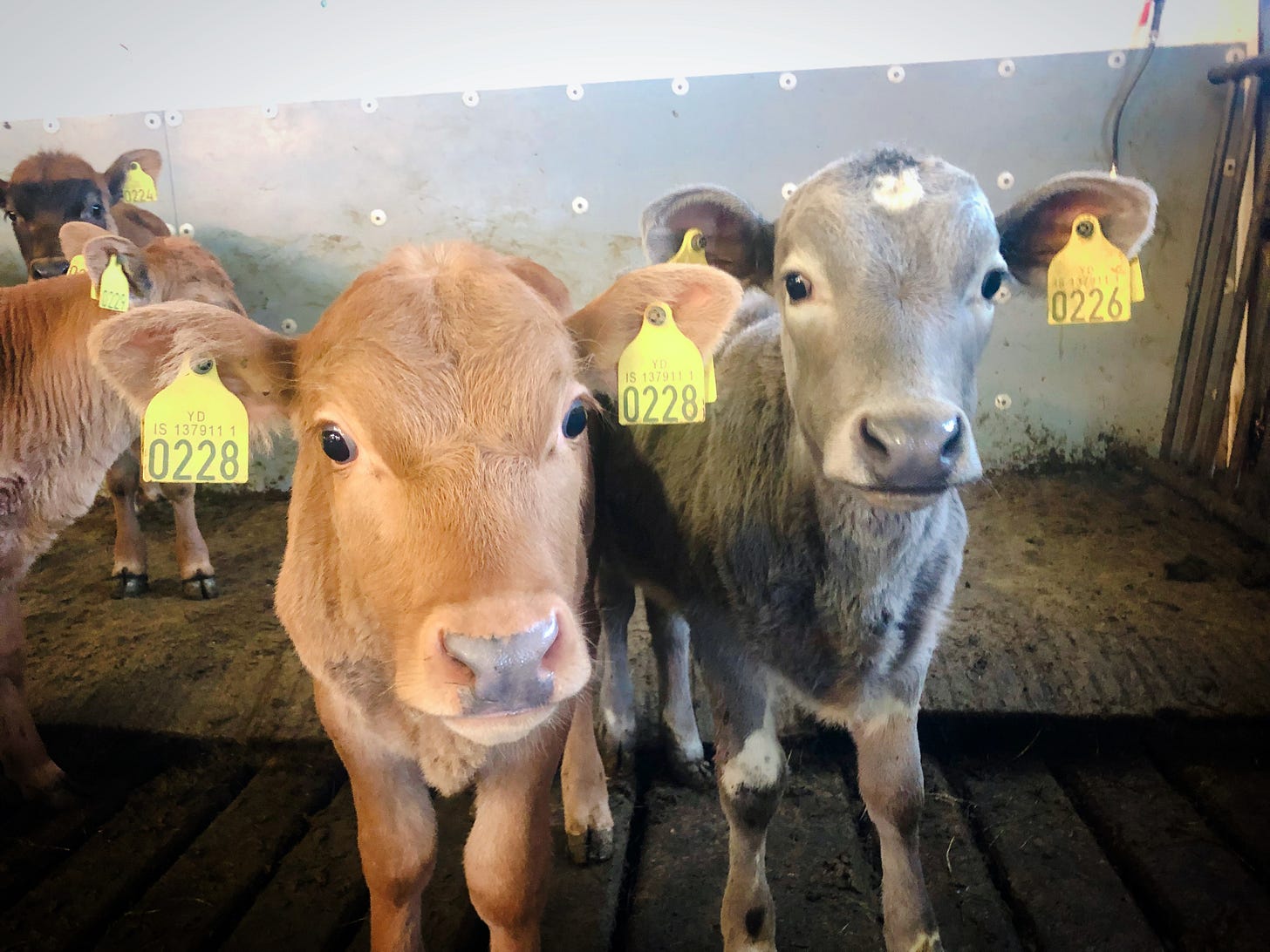Icelandic cows: A2 milk, unique genetics, and farming practices.
The only dairy cows in Iceland
As I’m traveling and learning about the world’s cheesemaking practices, I am observing the loss of older livestock breeds, farming methods, and communal land usage. The diversity of cheeses are being lost alongside these at an alarming rate. The dairy foods that I find most fascinating are emblems of these well established relationships, that are often at odds with the modern capitalist definitions of efficiency. I think the Icelandic cow, and the remnants of an older system of farming, actually are efficient when seen through a different lens. A look through this lens of mine is hopefully valuable, and I intend to work with the potential of the modern media environment which allows me to share my perceptions. The inefficiencies of the Industrial Holstein model - reliant on diesel, fertilizer, and imported grain - are becoming more apparent; I see it as my calling to explore and share the diversity of other approaches.
The fact that all of the cow milk sold and processed in Iceland comes from a single heritage breed is very unique. The cattle are a “settlement breed”, descending from herds brought by Scandinavian settlers in the 9th and 10th centuries. These herds contained breeds from Norway, which also shaped some French, British, and Channel island breeds. The Icelandic cow has essentially been kept isolated for 1000 years since these original herds were introduced. Like the goats and sheep here, they were never selected to conform to a standard appearance. They are a small breed with many colors and patterns, although this diversity is diminishing as AI (artificial insemination) means fewer bulls are passing on their genetics. There are pied, brindled, roan and finchbacked patterns as well as combinations of these. Some of the colors are very rare and highly esteemed, such as the beautiful grey calf shown below.
Of the many proteins in milk, a lot of conversation is focusing on two types of beta casein. A2 has been around for thousands of years and A1 is a recent mutation. There is some evidence that A2 milk is easier to digest; and that some of the people who consider themselves lactose intolerant simply have issues with this protein, rather than lactose. link: One persons journey with milk digestion issues
Cows possess one of 3 combinations of genes:
- two genes for A2
- two genes for A1
- one for A1 and one for A2
Many of the heritage breeds, as well as Guernsey and Brown Swiss produce mainly A2.
Some breeds produce both A1 and A2 evenly, or with a dominance of , A1 such as Ayrshire, Milking Shorthorn, and Holstein.
Cows can be tested to identify which genes they possess. Farmers are creating herds of only A2 milk, and marketing the milk as such.
Link: Article about A2 from Iceland
Since Icelanders consume only cow milk from Icelandic cows which carry mainly A2 genes, they are a unique population to study. The occurrence of type 1 diabetes is very low here, and that may be attributed to the milk.1 There are many claims about the positive effects of A2 milk, and the science. It seems safe to say that A1 is potentially less healthy and that much of the world’s drinking milk contains this type of protein due to the dominance of the Holstein in global dairy production. I personally feel milk is an incredibly healthy food, that we have made less healthy through modern breeding, confinement grain feeding, pasteurization, and homogenization. Like so many other foods, industrial production has removed the goodness, taken it from its healthy state, and made it unwholesome.
Unfortunately, there is little recognition here of how special this milk is. The country has not had its dairying and farming fully industrialized; the largest dairies only have 300-400 milking cows. The country has some of the lowest use of antibiotics in the world, and relatively low amounts of imported grain are used. A hallmark of many older breeds is a hardiness matching the local conditions, and an ability to produce from feed grazed, or grown locally. The dairy farmers in Iceland are required by law to have their animals on pasture for at least 2 months of the year, and during winter feed silage they generally cut themselves, or buy from nearby. Seaweed is harvested and dried, then used as a supplement for micronutrients. But rather than highlighting how unique this milk is, it is sold pasteurized in grocery stores with generic labeling.
The cows thrive in this place because they were bred to do so, but the isolation of the breeds here means they are susceptible to introduced diseases. Sheep populations were decimated by epidemics in the late 19th and first half of the 20th century; following the importation of other breeds. Iceland wisely decided to set up strict biosecurity measures to prevent this from happening again. The fact that the cows here have been kept free from the cross breeding that has resulted in so many heritage breeds being mixed with Holstein or Brown Swiss genetics is something that sets Iceland apart, and could be a selling point for aspiring cheesemakers.
I look forward to hearing your thoughts, questions, and critiques. If there is anything that perhaps needs clarifying, or elaboration, please let me know.
What other countries have access to milk mainly or solely from heritage breeds?
What are the pros and cons of tight restrictions on the movement of livestock genetics across international borders?
How do you feel about the conversation about A2 milk?
.










I just found this article you wrote, thanks so much. I was reading a book and it mentioned Icelandic cows so I had to look them up and found you!
Icelandic cows are a unique breed with a long history, known for producing A2 milk, which some people find easier to digest. It’s fascinating that all the milk in Iceland comes from this single heritage breed, preserved for over 1,000 years. Unlike the common Holstein cows, Icelandic cows thrive in their local environment with minimal help, and their milk is still healthy and pure. Unfortunately, this special milk isn’t widely recognized, as it’s sold with basic labeling in stores.
If you’re interested in learning about other unique cow breeds, check out the minicow.us/mini-cow-breeds/ page.